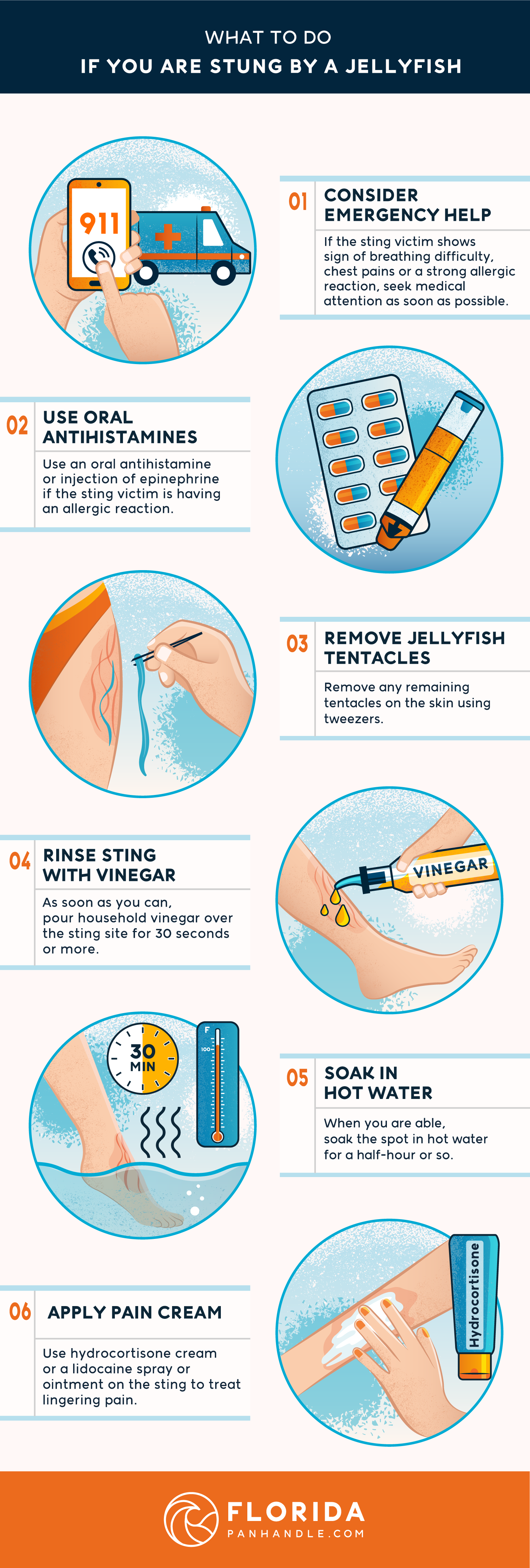Jellyfish 101: Facts and How to Avoid a Sting
Image courtesy of Chitbhanu Singh via Unsplash
All About Jellyfish
Jellyfish are found in all marine environments, no matter the depth of the water or the climate. Because of this, it's important to understand a little bit about these animals to avoid getting stung. Sea jellies are the simplest swimming animals; they are classified as cnidarians with no backbone.
Mature jellyfish can have a rounded or squareish saclike body called a bell, which their tentacles are attached to. Most jellies have their stinging cells in their tentacles but can also carry stinging cells in their bell. These stinging cells inject venom at contact, however, luckily, many species of jellyfish have a harmless and painless sting to humans. If you get stuck by a jelly, it's more likely out of an accidental encounter than because the jellyfish is angry. In fact, the purpose of their stinging tentacles is to kill plankton and other small organisms or to defend themselves against natural predators like sea turtles.
One type of jellyfish to remember is the box jellyfish, native to some U.S. waters in Hawaii and Florida. These box-shaped jellies carry a sting that can be fatal. Most jellyfish native to Florida carry a painful, but not necessarily fatal sting. Some of the jellies found in Florida include Sea Wasp, Upside-down Jellyfish, Pink Meanie, Mauve Stinger, Lion’s Mane, White Cross Jelly, Moon Jelly, Sea Nettle, Bay Nettle, Cannonball Jelly, Mushroom Jelly, and Australian Spotted Jellyfish. In subtropical climates, jellyfish are most common during the summer months.
How to Help a Jellyfish Sting
Staying alert while swimming, avoiding beached jellyfish, wearing protective clothing or lotion, and swimming with a group are some of the best practices to avoid being stung by a jellyfish. Despite this, though, transparent jellies can be difficult to spot and avoid in the water. If you or a friend is stung by a jellyfish, it’s best to consider contacting emergency help, especially if the sting victim experiences reactions like chest pains or an allergic reaction. Using oral antihistamines will help if the victim is having an allergic reaction to the venom. Remove any tentacles that may be attached to the skin with tweezers or any stiff object available, avoid touching or rubbing them with bare fingers. Next, rinse the sting with household vinegar for 30 seconds or longer. This will neutralize the stinging cells left behind on the sting victim’s skin. If vinegar is not available to you, ocean water is a good alternative. After a vinegar rinse, soak the sting in hot water for about 30 minutes, remaining as still as possible. Lastly, apply a hydrocortisone or lidocaine pain cream to the spot to reduce pain. Pain from a jelly sting can linger for weeks, so ointments may need to be reapplied.
Debunking Jellyfish Myths
Many myths surrounding jellyfish exist, with the most common being that urine is the best remedy for a jellyfish sting. However, research shows there is no solid proof that urine cures a sting, but rather, it could heighten the reaction. Another myth is that dead jellyfish are harmless and can no longer sting. This is untrue, as a jelly’s stinging cells can remain active even after the animal dies. Avoid poking or touching a washed up jelly with your hands. Many people also believe the Portuguese man-o’-war is the most dangerous jellyfish. These creatures are not true jellyfish, though. While their stings are painful, the most deadly jelly is the box jellyfish.
If you’re interested in learning more about jellyfish, read the Florida Panhandle’s comprehensive guide here.

